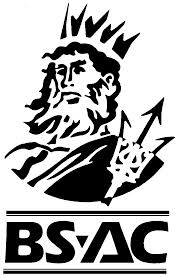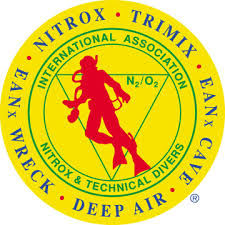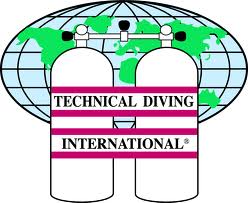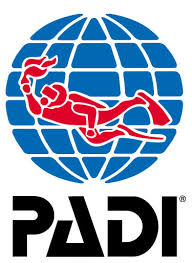
Accame
The Accame was a possible replacement for the Guisepena Accame, A four-masted steel barque built in 1891 by the Continental Lead & Iron Company Ltd., Pertusola, Italy, for Fratelli Accame fu E, Genoa. Her dimensions were 82,92×12,34×7,62 meters [289’0″×40’5″×25’3″] and tonnage 2142 GRT, 1843 NRT and 3000 DWT. Both are similar.
The Accame was en route from Rotterdam with a cargo of grain when she started to sink, another ship nearby came to her assistance but 1 crew member drowned and the remaining survivors were landed in Weymouth.
Today the wreck of the Accame is 34miles offshore and rests in depth of 48mtrs at low water and stands only 2-3mts above seabed, with parts very sunk into the seabed but you can see the outline of the ships gunwales. Crockery found shows part of a shipping line in Italian, loads of life especially lots of lobsters.
Ashford
The Ashford, a British steamer of 1,211 tons collided with the German barque , Pirat of Hamburg on the 25th June 1906.
The Ashford was en route from Seaham to St Nazaire with a cargo of coal. After the collision she was taken in tow by the tug Dominion but sank shortly afterwards. Today the remains of the Ashford, contrary to other dive reports is upright and intact, she stands some 8mtrs high from 42mtrs up to her decks at around 34mtrs.
Her super structure has collapsed down and her decking rotted away exposing her holds and cargo below. This makes for an excellent dive, giving good access areas to penetration & explore.

Donegal
Originally owned by the Midland Railway Company, the Donegal was requisitioned by the Admiralty in 1915 for conversion to a hospital ship. On 17 April 1917 she was being used to carry 639 wounded soldiers from Le Harve to Southampton when she was torpedoed and sunk by UC-21.
Today the wreck of the Donegal sits in 48mts of water and is upright and very intact, although some of her plating is beginning to collapse down. The Donegal is 36miles to the SW from Brighton, she is close to a busy shipping area and in a particular area for strong tides, visibility can be challenging at times, so go on a good neap.
Wrecks 50 – 75mtrs
Alaska
 The French steamship the Alaska was sunk in collision with the Dotterel on 15th November 1939, there were no survivors. Today this wreck lays in deep water, 65mtrs to the seabed, the ship itself has been broken open by salvors who recovered much of the ships copper ingots, but their grab did missed a few.
The French steamship the Alaska was sunk in collision with the Dotterel on 15th November 1939, there were no survivors. Today this wreck lays in deep water, 65mtrs to the seabed, the ship itself has been broken open by salvors who recovered much of the ships copper ingots, but their grab did missed a few.

THE ALBERNI 66mts
The Canadian Corvette Alberni was 193ft long and had a beam of 32ft, she had a top speed of 17knots, She struck a mine and sank on 21st August 1944 with the loss of 59 of her crew. Today she rests in 66mtrs and is on her side, again due to the depth she is very intact and stands some 12mtrs proud of the seabed.
The ‘Alberni’ is in the same area of the Channel as the Osprey and usually has excellent visibility, again it’s a long way from Brighton, some 42miles and as the osprey is best done on one of our cross channel runs Cherbourgh.
Why not try one of our 3 or 4 day trips to Cherbourgh, wrecks can include the belgian liner Leopoldville, the Empire Javlin and the Osprey.

Aracataca
The Aracataca built in 1911 for Elders & Fyffes, she weighed in at 4,154 tons was 376ft in length and had a beam of 48ft. The meat refrigeration ship Aracataca was enroute from Liverpool to Dunkirk with a cargo of frozen meat when she was is a collision south west of Beachy Head and sank on 18th April 1917.

Clan McMillan
The Clan McMillan of Glasgow was built in 1901 by A MacMillan & Son Ltd. She worked the routes between the UK & Australia, Africa & India. On 23rd March 1917 she left London bound for Glasgow, were not quite sure how she ended up in her final resting place but its not where everyone else says she is, reports give her only a few miles to the south west of Newhaven and in 24mtrs of water, but infact she is nearly 18miles south of Brighton and sitting upright in 65mtrs. She is a big wreck and stands almost 10mtrs high of the seabed and is in very good condition, she was identified by her name on the stern in big brass letters.

Glen Arm Head
This wreck is thought to be the wreck of the Glen Arm Head due to the amount of shell cases laying around. The Glenarm Head was a British armed steamer of 3,908 tons, she was torpedoed on the 4th January 1918 by UB-30 SW of the Brighton light vessel.
Today she rests in 65mtrs of water 16miles south of Brighton Marina, she is upright but broken.
HMCS Osprey 73-77mtrs
HMCS Osprey was built in 1940 at the US Navy Yard in Vancouver Canada. She is 220ft long and with a beam of 32ft and a displacement of 810tons.On the 4th June 1944 the Canadian built minesweeper was attached to the 7th U.S. minesweeping squadron and was engaged in sweeping a path for the D-Day landings and Operation Overlord. It was whilst she was engaged in these duties that she struck a mine at 18.15pm and went to the bottom of the channel.This is a must do dive for any serious UK wrecks diver.
This is an intact minesweeper lying on her port side with the bronze wheelhouse still intact. Look in the wheelhouse and see the bridge gear still in place.This wreck is 46 miles from Brighton and is usually dived on one of my cross channel trips to Cherbourg, Can be done on a day trip but works out expensive





![images[3]](https://www.channeldiving.com/wp-content/uploads/images31.jpg)




